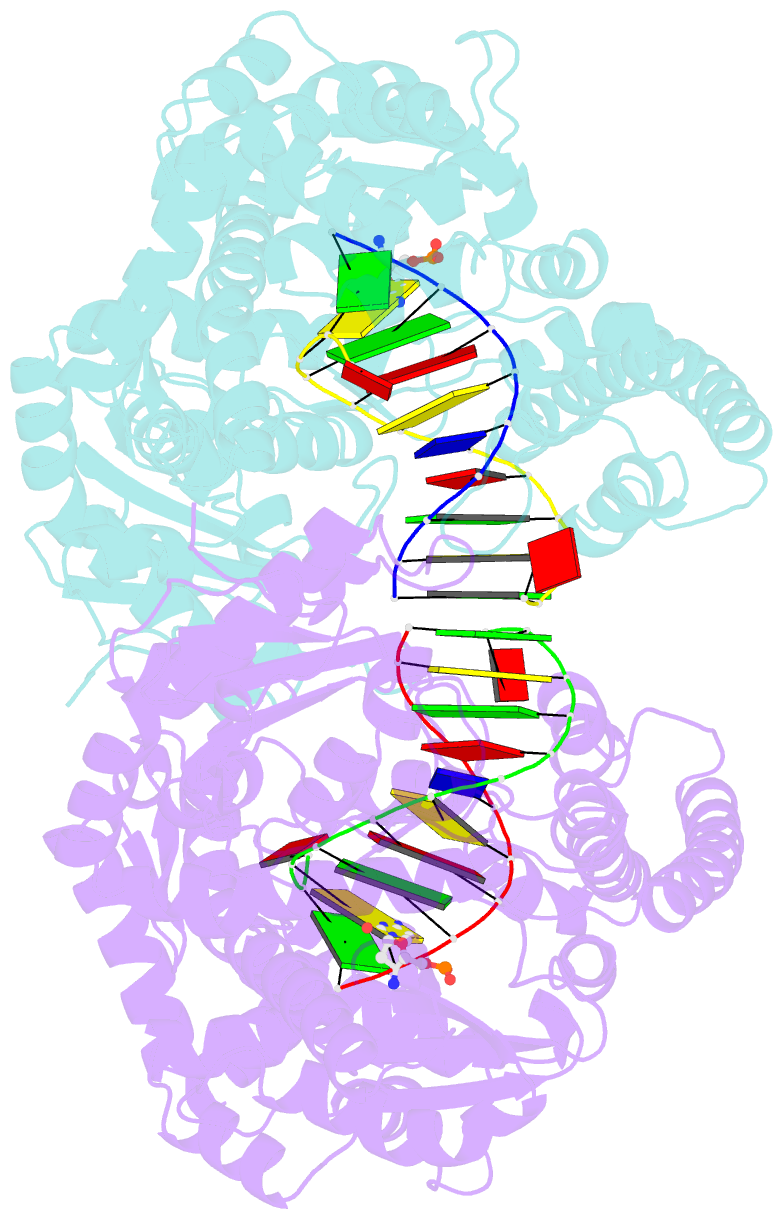Summary information and primary citation
- PDB-id
- 8scm; SNAP-derived features in text and JSON formats;
DNAproDB
- Class
- replication-DNA
- Method
- X-ray (2.3 Å)
- Summary
- Bst DNA polymerase i large fragment mutant f710y-d598a with 3'-amino primer, dgtp, and calcium time-resolved 8h
- Reference
- Lelyveld VS, Fang Z, Szostak JW (2023): "Trivalent rare earth metal cofactors confer rapid NP-DNA polymerase activity." Science, 382, 423-429. doi: 10.1126/science.adh5339.
- Abstract
- A DNA polymerase with a single mutation and a divalent calcium cofactor catalyzes the synthesis of unnatural N3'→P5' phosphoramidate (NP) bonds to form NP-DNA. However, this template-directed phosphoryl transfer activity remains orders of magnitude slower than native phosphodiester synthesis. Here, we used time-resolved x-ray crystallography to show that NP-DNA synthesis proceeds with a single detectable calcium ion in the active site. Using insights from isotopic and elemental effects, we propose that one-metal-ion electrophilic substrate activation is inferior to the native two-metal-ion mechanism. We found that this deficiency in divalent activation could be ameliorated by trivalent rare earth and post-transition metal cations, substantially enhancing NP-DNA synthesis. Scandium(III), in particular, confers highly specific NP activity with kinetics enhanced by more than 100-fold over calcium(II), yielding NP-DNA strands up to 100 nucleotides in length.





